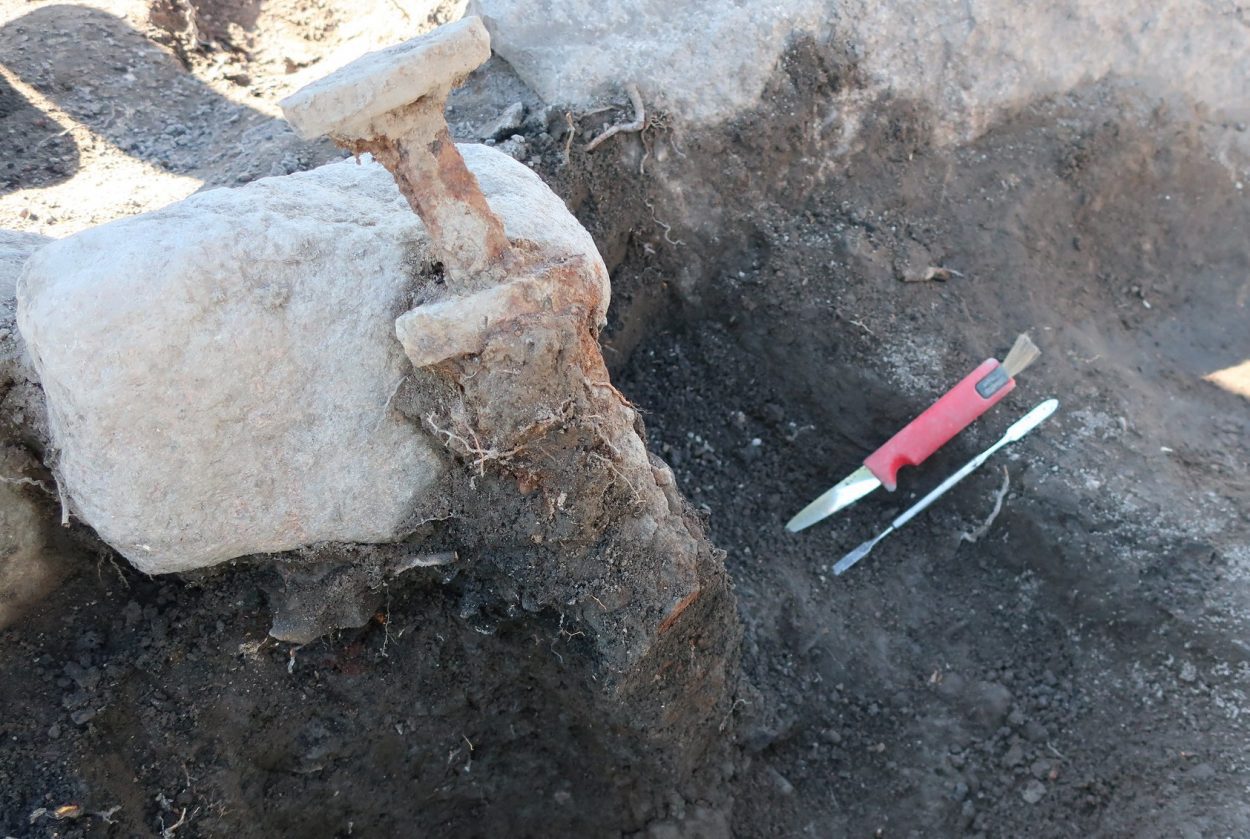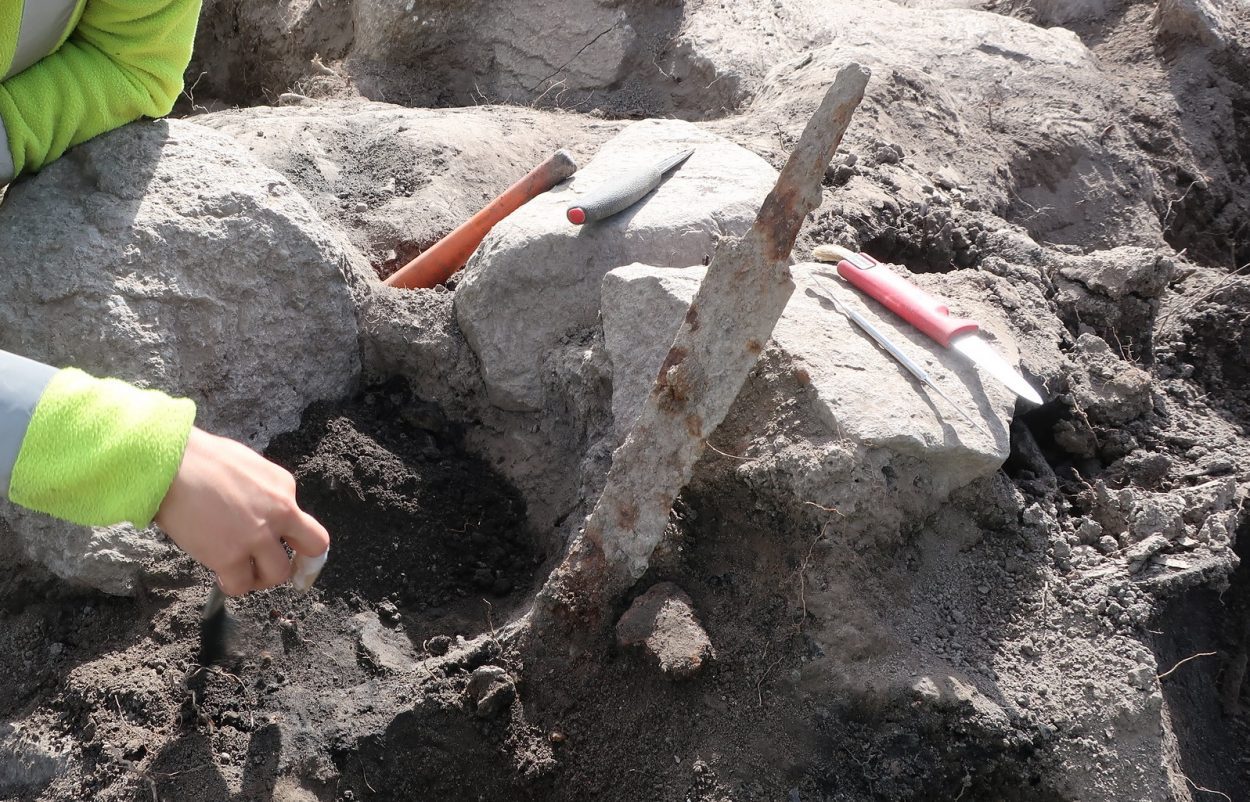Archaeologists from Arkeologerna have uncovered two Viking Age swords during excavations in Västmanland, outside of Köping, Sweden.
The swords were discovered during an archaeological investigation of a Late Iron Age burial ground, which dates from around AD 600 – 1000.
The site contains 100 graves and two burial mounds, with evidence of further burial activity indicated by the discovery of three stone tombs added centuries later into one of the mounds.
Excavations of one of the tombs revealed a large cache of glass beads, while in the middle of the other two tombs, archaeologists found two Viking Age swords which had been placed standing upright in a shallow setting.

In total, around 20 Viking Age swords have been found in the Västmanland area, however, this is the first time that two swords have been found in the same burial ground and left standing untouched.
Speaking on the discovery, Anton Seiler from Arkeologerna, suggests that the swords could have been placed on the mound to honour and remember one’s relatives, being a physical marker that family members could visit and touch 1200 years-ago.
Excavations also found the cremated remains of humans and animal bones, in addition to a gaming piece and parts of a comb and bear claws. Evidence of earlier occupation has also been identified, with archaeological remains of agricultural farming that dates from the Bronze Age or earlier Iron Age.
Why several individuals were buried in the mound centuries later, or determining their gender is still yet to be determined, however, remains sent for an osteological analysis should hopefully provide further answers for the researchers.





